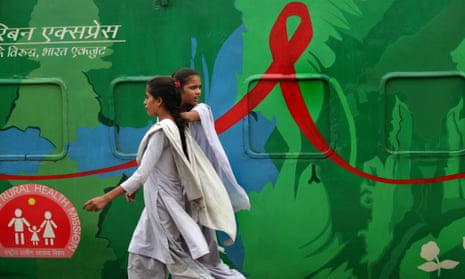What is MDG 6 all about?
When the millennium development goals (MDGs) were devised, Aids, malaria and tuberculosis killed approximately 6 million people each year. World leaders felt it was imperative to have a goal dedicated to tackling this deadly trio.
MDG 6 has two targets on HIV and Aids – the first to halt and begin to reverse the spread of the HIV virus by 2015, and the second to achieve universal access to treatment for all those who need it by 2010. Progress on these targets is measured by a range of factors, including HIV rates among young people aged 15 to 24, rates of condom use, knowledge of HIV and Aids among young people, and the number of people with advanced HIV infection who have access to antiretroviral drugs.
A third target aims to halt and reverse the spread of malaria and other major diseases. This is measured by malaria incidence and related deaths, the proportion of children under five sleeping under insecticide-treated nets, and the proportion of children under five with fever who are treated with anti-malarial drugs.
The only other major disease mentioned is TB, the spread of which also needs halting and reversing by 2015 under MDG 6 indicators.
Why is TB the only other disease mentioned?
Some health advocates have argued that by focusing on the big three killers – Aids, malaria and TB – MDG 6 has neglected other diseases, leaving them without the funding required to combat them. Plans to address the burden of other diseases have been rolled out by countries individually.
The World Health Organisation has focused on 17 neglected tropical diseases (NTDs) endemic in 149 countries and affecting more than 1.4 billion people. They include dengue fever, rabies, trachoma, leishmaniasis and soil-transmitted helminthiases. These diseases are prevalent in both low-income countries and wealthy regions. Dr Peter Hotez, an NTD specialist, estimates that about 12 million Americans have one or more tropical disease.
Meanwhile, non-communicable diseases (NCDs), which include diabetes, cardiovascular disease and cancers, kill approximately 38 million people each year, with almost three-quarters of deaths occurring in low- and middle-income countries. Despite posing a significant risk to the health and development of poorer countries, NCDs received little attention and health advocates say attracting funding has been challenging.
Will the goal be met?
UN data indicates that the world is on track to meet its target of halting and reversing the spread of malaria and TB, but will fail to meet all targets on HIV and Aids.
Progress on malaria has been significant, but the disease remains a major killer in low-income countries. Global malaria mortality rates fell by 47% since 2000, from 985,000 malaria-related deaths in 2000 to 584,000 deaths in 2013. There was a 54% reduction in Africa. This progress has been attributed to the scaling up of malaria prevention and control methods such as greater access to diagnostic testing and treatment, increased use of insecticidal bed nets and higher rates of indoor residual spraying.
The world has achieved its target to halt and reverse the spread of TB, with the prevalence of the disease falling by an estimated 41% between 1990 and 2013. Globally, the TB death rate fell by an estimated 45% in the same period. TB treatment success rates have risen and remain above 85%. Despite this progress, multi-drug resistant TB remains an obstacle.
The number of new HIV infections has decreased, but not fast enough, declining by 44% among every 100 adults between 2001 and 2012. Despite this progress, there were an estimated 2.3 million cases of people newly infected with HIV and Aids, and 1.6 million Aids-related deaths. By the end of 2013, approximately 12.9 million people were receiving antiretroviral therapy globally. Of these, 11.7 million lived in low- and middle-income countries, accounting for 36% of people living with HIV in these countries. The WHO says that if current trends continue, the target of placing 15 million people on antiretroviral therapy by 2015 will be reached.
Of particular concern, however, is an increase in risky sexual behaviour and insufficient knowledge about HIV among young people. The UN’s 2014 progress report found that in sub-Saharan Africa, only 39% of men and 28% of women aged between 15 and 24 had knowledge of HIV. It also found that condom use among young people who had higher-risk sex was 57% for men and 37% for women, far below the 95% target.
How does MDG 6 fit into the new development goals?
The sustainable development goals, set to replace the MDGs, feature a far more comprehensive list of global health targets than their predecessors. The new health goal aims to “ensure healthy lives and promote wellbeing for all at all ages”, and encompasses 13 targets on issues such as child and maternal health, disease prevention, tobacco control, alcohol abuse, sexual and reproductive health and global health epidemics.
The new goal also aims to address concerns that the MDGs sidelined NTDs and NCDs, with both groups of diseases mentioned explicitly. The targets include ending the epidemics of Aids, TB and NTDs by 2030, and reducing by one-third premature mortality from NCDs. Mental health, also absent from most MDG discussions, has been included in the SDGs. The health goal contains a target to promote mental health and wellbeing.
